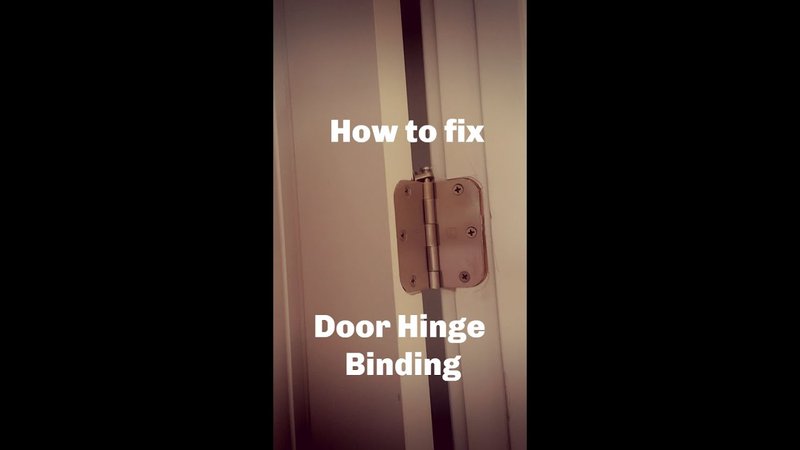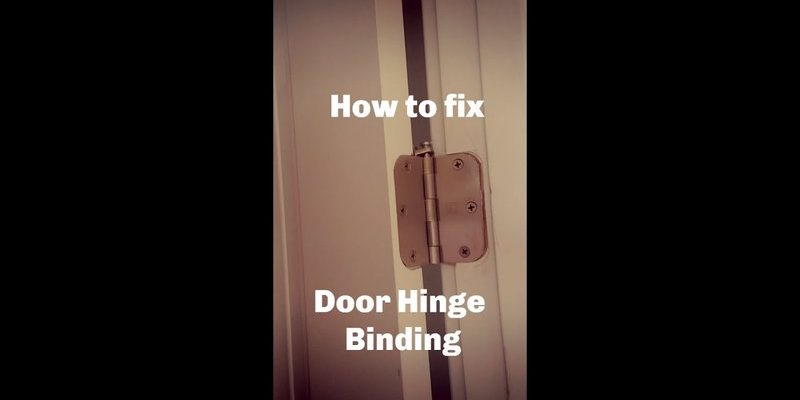
Here’s the thing: *most* people blame only the hinges, the lock, or even a sticky frame. But doors are like wood sandwiches—constantly changing with the seasons. Sometimes, the real culprit is an *imperceptible door warp*—so slight you can’t see it, but just enough to make hardware bind. If you’ve got a modern Kwikset lock, a Schlage deadbolt, or even a universal smart lock, any of them can struggle if the door’s gone a little wavy.
Let me explain what to look for, how to confirm what’s really going on, and—most importantly—how to fix it so your doors behave again.
What Causes Door Warp—And Why Is It So Hard to Spot?
Honestly, door warp is one of those sneaky issues you don’t see coming. Most doors, especially the wooden kind, are sensitive to temperature and humidity. Think of them like sponges—when moisture rises, wood swells; when it drops, wood shrinks. Over time, these changes can twist, bow, or warp a door. And we’re not talking cartoon-level warping here—sometimes we’re talking about a fraction of a millimeter, just enough to throw everything off.
Here’s what makes it especially tricky: *imperceptible* warping often shows up as tiny alignment issues. Your hardware—the latch, bolt, lockset, hinges—suddenly feels tight or misaligned without any visible clues. That’s why people often keep blaming their lock code or remote sync, thinking something’s off with their smart hardware, when it’s really the door moving underneath.
If your lock worked perfectly in the winter but jams every summer, or if your hardware starts binding after a rainy week, you’re probably dealing with a warped door. The problem is, unless you take a close, methodical look, you might miss it entirely.
Signs Your Hardware Is Binding from Door Warp (Not Just a Faulty Lock)
You might be wondering, “How do I know if the problem is really warping, and not just a hardware issue?” Good question. Both can look similar, but the devil’s in the details.
- Handles or knobs feel stiff or resist turning: If the motion changes with weather or time of day, suspect the door, not just the hardware.
- The latch or bolt doesn’t line up with the strike plate: If your deadbolt barely makes it into its hole, or if you have to lift the door to lock it, warping could be to blame.
- Locks work with the door open, but not closed: If your Schlage smart lock throws the bolt just fine in mid-air, but jams when the door is shut, that’s a big red flag.
- Remote-activated locks fail to fully engage: For smart locks or garage door remotes, software resets or code syncing won’t help if the door isn’t physically straight.
A real-world example: A friend’s house had a universal remote deadbolt that kept “losing sync” every time it rained. After three battery swaps and two resets, we realized the hardware wasn’t the issue—the door bowed just enough to bind the deadbolt.
Quick Checks: How to Confirm If Door Warp Is the Real Issue
Before you start taking your door apart or running software resets on your smart hardware, do a few diagnostic checks. Here’s how I spot a warped door—even when it looks perfectly fine.
- Open and close the door slowly and observe: If there’s a point where things get tight—especially near the latch or bolt—that’s a clue.
- Test the hardware with the door open: Try turning the knob, latching the bolt, using the keypad code, or activating with your remote while the door isn’t in the frame. If everything works easily, but sticks when shut, the door is likely warped.
- Check for daylight or uneven gaps: Stand inside and look at the door edges. Is there more daylight at the top, middle, or bottom? Slight differences can signal a bow or twist.
- Use a straightedge or level: Place it along the door’s edge (top, bottom, and latch side). Any wobble or gap, even tiny, means you’ve got a subtle warp.
If those tests confirm that all your code syncing, resets, and new batteries aren’t helping, you’ve zeroed in on a warped door as the culprit.
Why Hardware Binds on Even the Slightest Warp
It might seem wild that a door out by just a hair could mess up solid metal hardware, but here’s why it happens: door hardware is engineered with very precise tolerances. Latches, deadbolts, and even keypad smart locks need parts to line up almost perfectly.
When a door warps, even by a millimeter, you get things like:
- Latches misaligned with strike plates: The latch catches on the edge, or misses the hole entirely.
- Bolt drag: A warped door curves away (or toward) the frame, making the deadbolt scrape or fail to enter.
- Remote issues: Universal or branded remotes (like Kwikset or Schlage) might report a “jam” error or act as if out of sync or needing a code reset, when it’s actually mechanical resistance from the warp.
Sometimes, folks try lubricating or adjusting the hardware, but unless you fix the alignment at the root, you’ll end up stuck in a loop—new batteries, resets, nothing fixes the underlying problem. The tiniest door movement can make precision hardware act up or even burn out its motor.
If your smart lock’s battery keeps dying, don’t just blame the code or the electronics—the lock could be fighting against a warped door every single cycle.
Step-by-Step Fixes for Doors Binding from Imperceptible Warp
Once you know warping is the issue, what can you do? Here’s the step-by-step approach I use, from least invasive to most.
- Adjust the strike plate: Sometimes, moving the strike plate a millimeter or two fixes the alignment. You may need to file the opening or reposition it using wood filler and fresh screw holes.
- Tighten or shim the hinges: Loose hinges can exaggerate small warps. Tighten all screws, and use thin cardboard shims behind the hinge leaf to tweak the door’s angle. Focus on the top or bottom as needed.
- Sand or plane the rubbing edge: Mark where the door is sticking (use chalk or lipstick for precision), and gently sand or plane that area. Go slow—you only want to remove just enough material to relieve the bind.
- Control the humidity: For wood doors, a dehumidifier or AC may help reverse minor warps. This is especially worth trying in basements or during wet seasons.
- Upgrade to adjustable hardware: Some strike plates and modern smart locks have “floating” or adjustable parts—meaning they tolerate more movement. That could be a game-changer if your house settles a lot.
A full door replacement is usually the last resort. Most times, a careful tweak or two saves the day—and your patience.
Comparing Hardware Brands: Which Are Most Forgiving of Slight Door Warp?
Here’s an open secret: not all hardware handles door movement the same. Some brands, like Schlage or Kwikset, are built tight for security, but that means less wiggle room (literally) when a door goes wonky.
- Kwikset: Known for convenient key code programming and remote compatibility. Their SmartKey feature is easy to reset, but their deadbolts can bind if the door isn’t straight.
- Schlage: Durable and secure, but requires precise alignment. If your door or frame warps, even slightly, their latches can get sticky or jam.
- Universal smart locks: Designed for broader compatibility, so some models have a bit more play or floating bolt mechanisms. These can self-correct for small misalignments, but not if your door is way out of true.
If your house is prone to shifting (think old homes or humid climates), look for hardware with slotted screw holes, adjustable strikes, or “auto-align” features. They won’t fix *major* warps, but they do help with everyday quirks.
How to Prevent Door Warp (and the Headaches That Come With It)
Fixing the problem is great, but keeping it from coming back? Even better. Doors are always at risk of warping, especially exterior ones, but you can take steps to minimize it.
- Seal and finish every edge: Make sure the top and bottom of your door—often skipped by painters—are sealed with paint or varnish so moisture doesn’t sneak in.
- Keep humidity in check: Use a dehumidifier in damp seasons or in basements. Even small swings in moisture can make wood move.
- Check for leaks or drafts: Water or air leaks can speed up warping. Weatherstrip or repair as needed.
- Open and close carefully: Avoid slamming or leaning on the door—that added stress can speed up warping (and hardware wear too).
Prevention is way easier than constant troubleshooting, resets, or code reprogramming. A little love for your door keeps the hardware—and your nerves—steady.
When to Replace vs. Repair: Making the Call
There comes a point—usually after a few repairs and yet another stubborn lock—where you have to ask yourself: is it time for a new door? Here’s how I decide.
- Minor, seasonal warping: Try adjusting the strike plate, tightening hinges, and controlling humidity. If these work, you’re good.
- Obvious, permanent bow or twist: If the door stays warped year-round, or if you can fit a pencil through the gap, replacement is likely best.
- Failed fixes and ongoing hardware issues: If you’ve adjusted everything—the code’s right, the batteries are fresh, remotes are synced, but nothing sticks—don’t fight it. A new, properly installed door makes life much easier.
Remember: fixing a warped door isn’t just about making the lock work; it’s about peace of mind. There’s nothing more annoying than hardware that almost works.
Wrapping Up: Getting Back to Smooth, Trouble-Free Doors
Even the tiniest door warp can drive you nuts, especially when it makes your hardware bind, jam, or act out. The good news? Now you know how to spot the signs, confirm what’s really at fault, and use a simple step-by-step approach to fix things up. Whether you’re dealing with classic hardware or the latest smart lock synced with your remote, most binding issues come down to that barely-there door movement.
Tackle the warp, and you’ll find your hardware suddenly “magically” works again—no need for endless resets, code reprogramming, or pricey replacements. Your doors should work *with* you, not against you. Armed with a sharp eye and these tips, you’ll save time, money, and a whole lot of daily frustration.
